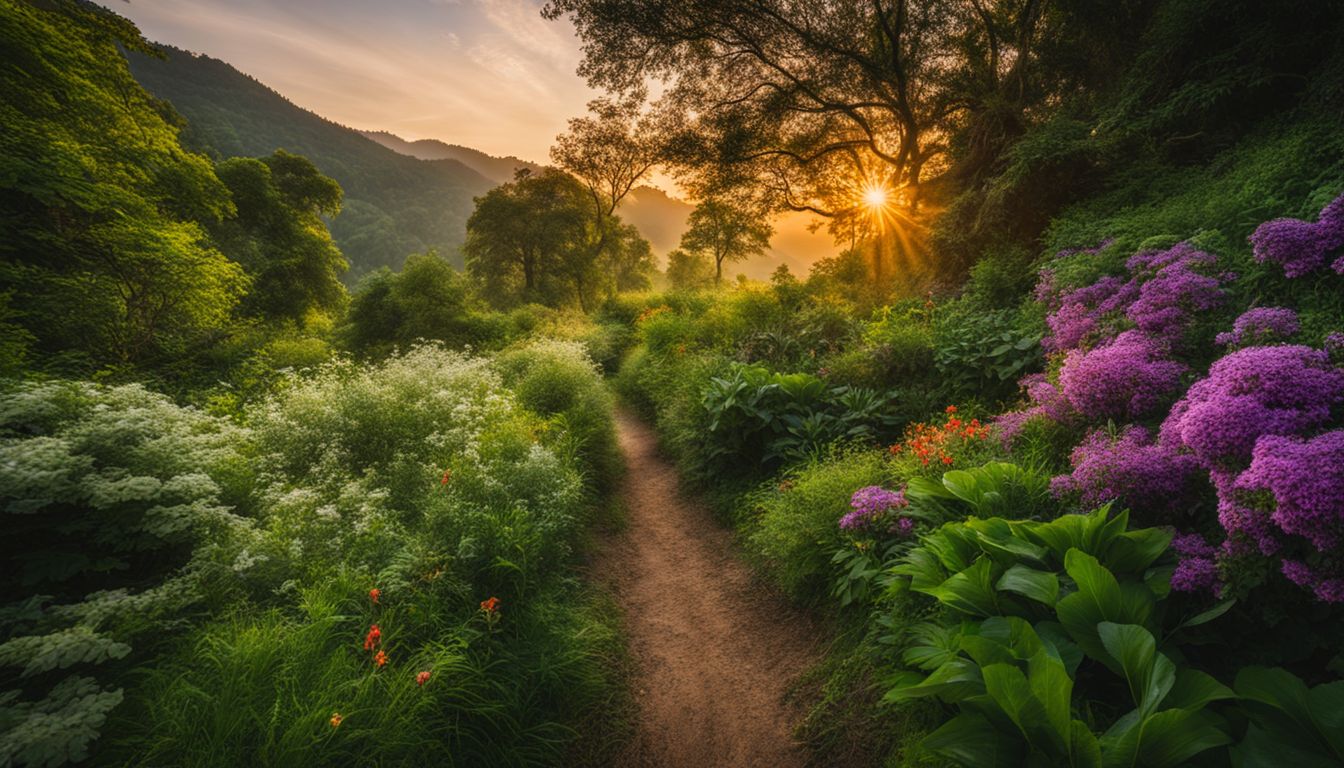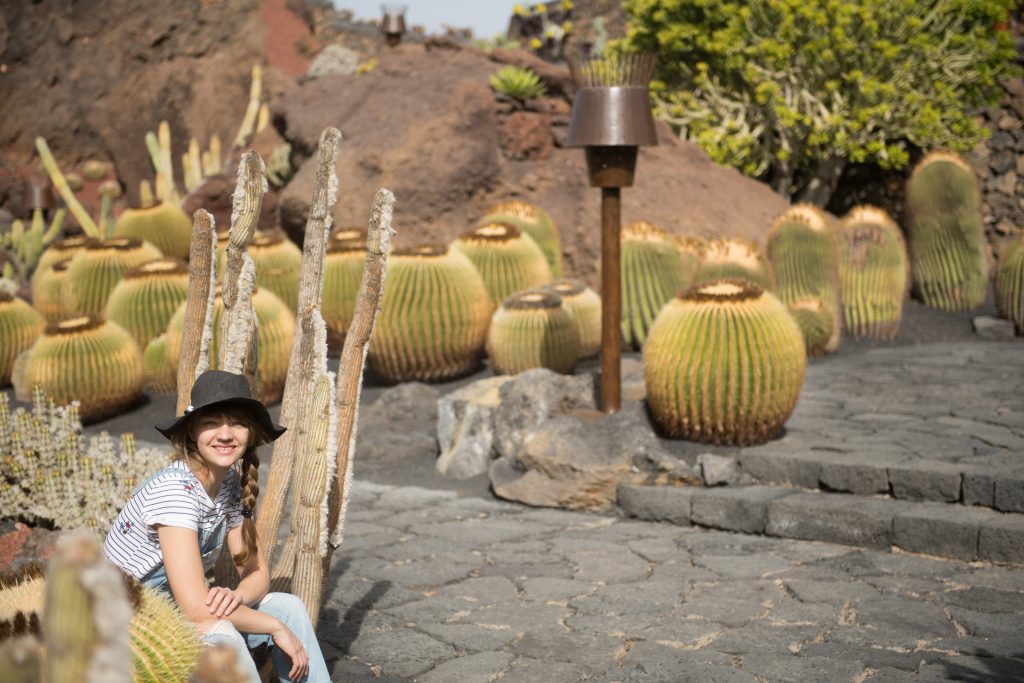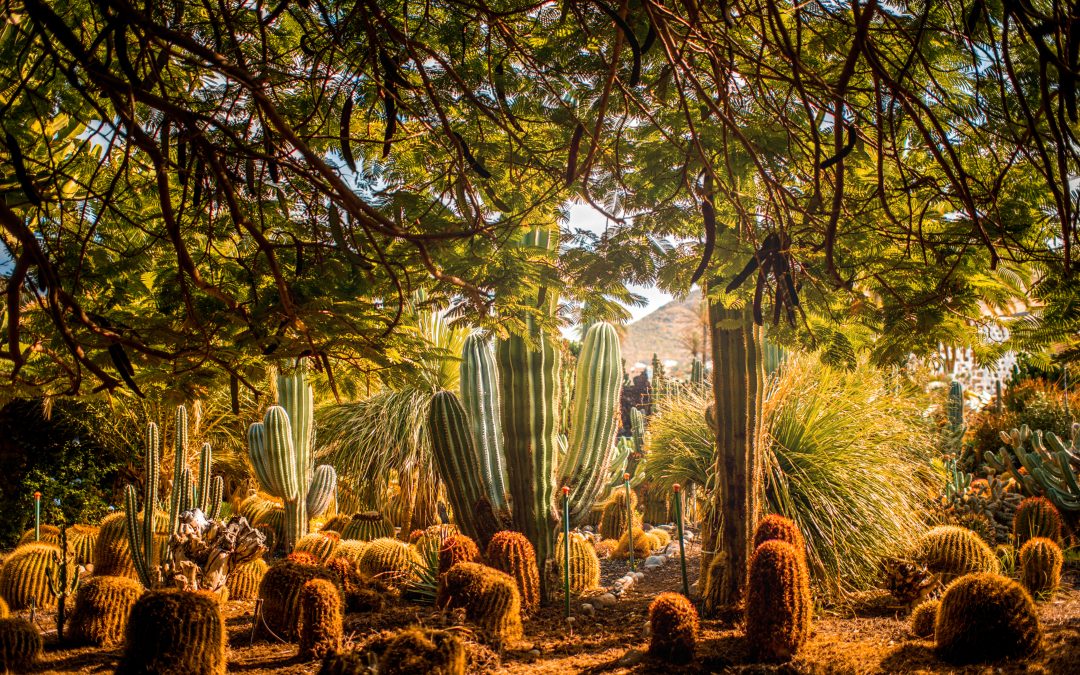Finding that perfect spot to immerse yourself in nature while on vacation can feel like a daunting task. You’re searching for somewhere beautiful, yet overflowing with history and life—I know the feeling well, sifting through endless options, slightly overwhelmed by the choices.
But then I stumbled upon a true jewel: the Botanic Garden of Gran Canaria.
This place isn’t just any garden; it’s the largest botanical garden in Spain, lovingly established back in 1952 by Swedish botanist Eric Sventenius. Picture this: nearly 27 acres teeming with over 10,000 species from all corners of the globe! As I delved deeper into exploring this majestic haven, its significance unfolded before me as more than just a picturesque escape—it’s a sanctuary for precious plant life, including countless varieties you’d be hard-pressed to find anywhere else outside their native locales.
This piece will guide you through what sets this garden apart and why it deserves a prime spot on your travel itinerary. Brace yourself for an exploration like no other!
Main Points
- The Botanic Garden of Gran Canaria is the biggest botanical garden in Spain, started by Eric Sventenius in 1952. It has nearly 27 acres with over 10,000 plant species from around the world.
- This garden is not just about looking at plants. It does important science work to learn about and save rare plant types from the Canary Islands and other places.
- You can find unique sections like the laurel forest, palm tree square, and areas showing endangered species from Macaronesian archipelagos.
- For visitors, there are free guided tours on weekends and public holidays but you need to book ahead. Remember to check visiting hours which changed because of Covid-19.
- Inside, there’s a special greenhouse for tropical plants and a place called “Jardín del Mundo” where plants from each continent are shown off.
The Botanic Garden of Gran Canaria

So, I visited the Botanic Garden of Gran Canaria and wow, it was amazing. This place is not just a garden; it’s a giant outdoor museum filled with plants from all over the Canary Islands.
History and Founder
Eric Sventenius, a Swedish botanist, started the Botanic Garden of Gran Canaria in 1952. He loved plants and wanted to protect them. This place was his dream. It shows off many unique flowers and trees from the Canary Islands.
A garden is a grand teacher.
Sadly, Eric’s life ended too soon in 1973 because of a car accident right outside this beautiful garden he created. His work still inspires people today who visit the garden. They see how important it is to care for nature.
Garden Areas and Features
I walked through the Botanic Garden of Gran Canaria and saw it’s not just big; it’s a massive 27 acres of green space. This place has different spots like the laurel forest, which made me feel like I was in a fairy tale.
The palm tree square was another treat, full of tall, majestic palms that stretched up to the sky. And let’s not forget about the island garden – it showcased plants native to this area, making me realize how diverse nature can be.
As I explored more, each part had its own vibe and beauty. The laurel forest felt cool and mysterious with its thick foliage. In contrast, being in the palm tree square felt open and bright under the sun’s warm rays.
Walking through these areas gave me a deep appreciation for nature’s artistry right here on Gran Canaria Island – from leafy greens to rugged landscapes under one big blue sky. It was an adventure that showed me how gardens provide more than just pretty sights; they’re places where you can learn and connect with nature on every path you take.
Ongoing Research and Development
After walking through the stunning areas and features of the garden, it’s clear that this place is more than just pretty flowers and plants. The Botanic Garden of Gran Canaria is a hub for research and development.
Scientists here work hard to learn more about plant life in the Canary Islands. They study many things, like how plants grow and survive in different environments.
The work didn’t stop after Sventenius passed away; other smart people took over. They keep finding out new things about plants. This helps us protect rare species and understand nature better.
It’s exciting to think about all the discoveries happening right here in this beautiful garden!
The Jardín Botánico Canario “Viera y Clavijo”

The Jardín Botánico Canario “Viera y Clavijo” is a magical spot. It’s full of life and colors, where you can see plants that are unique to the Canary Islands.
Endemic Flower Species
I walked through the garden, amazed by all the endemic flower species. Each one comes from a different island in the Canary Islands. It’s like each plant tells its own story of where it’s from.
They have them grouped by their islands too, which makes it easy to see how diverse these places are just based on their flowers alone.
I learned that these plants aren’t found anywhere else in the world, only here and on their specific islands. It really shows how special and unique Gran Canaria is. Seeing these flowers, you get a sense of the rich natural beauty this place holds, something you can’t find just anywhere.
Endangered Species from Macaronesian Archipelagos
I love sharing about unique places that catch my eye, and today, I’m talking about something close to my heart. The Botanic Garden of Gran Canaria shines a light on endangered species from Macaronesian archipelagos.
It’s not just any garden. This special section, called the “Jardín Macaronésico Ornamental,” gathers plants at risk from places like the Azores, Cape Verde, Canary Islands, Madeira, and the Savage Islands.
Here’s why it matters. These islands are home to many unique plants nowhere else on Earth can claim. By visiting this garden area, you see efforts to save these rare greens from disappearing forever.
Conservation work here is vital for our planet’s biodiversity—keeping the variety of life rich and fascinating for future generations. Touring this part makes me feel part of something bigger—a global effort to protect nature’s treasures.
Tropical Species Greenhouse
In the Jardín Escondido, I step into a world of lush greens and exotic plants. This special greenhouse is all about creating the perfect wet home for tropical species like big grasses, water-loving papyrus, tall bamboo, delicate ferns, and even tiny bonsai trees that started life right here in the Canary Islands.
It’s like walking through a patch of rainforest where every plant fights to reach the sun.
The first time you walk into the Jardín Escondido, it’s like stepping into another world—a humid, vibrant sanctuary that somehow feels both wildly untamed and carefully cherished at the same time.
Commemorative “Jardín del Mundo”
I visited the “Jardín del Mundo” to celebrate its 50th anniversary back in 2002. This unique place is split into five parts. Each one shows plants from a different continent of our planet.
Walking through it, I felt like I was on a quick trip around the world. First, I strolled through Europe with its classic flowers. Then, Asia amazed me with exotic colors and shapes.
Next up, Africa’s section had some hardy plants that survive tough conditions. The Americas part showed both North and South American flora which was super cool! Finally, Oceania wrapped up my tour with fascinating plants from down under.
It was like stepping foot on each continent without ever leaving Gran Canaria!
The Central Area and Monument
In the heart of the garden, there’s a special place that catches everyone’s eye. It’s called the Fountain of the Wisemen, a stunning water feature surrounded by greenery that makes for a perfect photo spot.
Fountain of the Wisemen
At the heart of Gran Canaria’s Botanic Garden, there’s a spot I find truly inspiring. It’s called the Fountain of the Wisemen. This monument honors important naturalists who’ve made great contributions to botany.
Think about Born-Müller, Pitard, Bolle, Broussonet, Webb, Berthelot, and Masferrer – these are giants in the world of plant science. Their work helps us understand how vital plants are to our world.
To pay homage is to remember forever.
Visiting this fountain isn’t just about seeing a beautiful piece of art. It’s a moment to reflect on how far we’ve come in understanding nature thanks to these wisemen. Each name engraved here tells a story of discovery and passion for plants that continues to inspire researchers and visitors alike.
Walking around it makes me feel connected not only to Gran Canaria but also to the vast world of science and exploration beyond its shores.
The Garden’s Extensive Collection
I got the chance to wander through this magical spot in Gran Canaria. The garden is home to over 10,000 plant types from around the world. Walking around, I saw so many plants that only grow here and in nearby areas like Tenerife and La Palma.
This place showcases an incredible variety from the Canary Islands and beyond.
Every step took me past amazing endemic flowers, some of which are at risk of disappearing. It was like stepping into a living library of plants. From towering greenery in the Tropical Species Greenhouse to unique species from Macaronesia, it’s all there.
Seeing these rare and endangered plants up close was unforgettable—like meeting celebrities but in the plant world!

Useful Information
For your trip to the Botanic Garden of Gran Canaria, you’ll need a few details. The garden sits in Las Palmas and welcomes visitors at specific times. You can call ahead or check online for these hours.
If you want to learn more, they offer tours that you must book in advance. This makes planning easy!
Location and Contact Details
You’ll find the Botanic Garden of Gran Canaria at Camino del Palmeral 15, Tafira Alta. It’s in Las Palmas de Gran Canaria, a spot easy to reach and filled with beauty. If you need help or have questions, just call +34 928 219 580 or +34 928 219 583.
The people there are always ready to assist.
Next up, let’s talk about when you can visit this amazing place.
Visiting Hours
I want to share something important about my trip plans. The Botanic Garden of Gran Canaria changed its hours because of the Covid-19 pandemic. Now, from Monday to Friday, the garden opens early at 7:30 a.m.
and closes at 2 p.m. For weekends and public holidays, it’s different; you can visit from 10 a.m. to 5 p.m. This change helps keep everyone safe.
They also set a limit on how many people can be in the garden at once — only 250 visitors are allowed in at any time. This way, we all have enough space to enjoy our visit without it being too crowded.
I’m making sure to plan my visit within these new hours so I can see everything without rushing!
Guided Tours and Reservation
Exploring the Botanic Garden of Gran Canaria becomes extra special with a guided tour. You get to learn a lot while walking around this green space.
Here’s what you need to know about signing up:
- Tours are free on weekends and public holidays. This means you can enjoy a full experience without spending extra money.
- You must book in advance. Since places fill up quickly, it’s smart to plan ahead.
- To reserve your spot, visit the garden’s official website or call their contact number. They’ll need some basic information from you.
- Check the visiting hours before you book. This will help you pick a time that works best for you.
- Ask about language options if you’re not fluent in Spanish. Often, they offer tours in different languages.
- Wear comfortable shoes and bring water. You’ll be walking quite a bit.
- Don’t forget your camera or phone for photos. The garden is full of beautiful sights.
Now, let’s move on to what else you can do at the garden besides joining a tour…

FAQs
1. What is the Botanic Garden of Gran Canaria?
It’s a special place in Gran Canaria where you can see lots of plants and flowers. It shows how beautiful nature is on the island.
2. Where is Gran Canaria located?
Gran Canaria is one of the Canary Islands, near Africa but part of Spain. It’s a sunny spot with beaches and mountains.
3. Can I see any famous landmarks in Gran Canaria?
Yes! You might see Roque Nublo, a big rock that stands tall in the mountains. There’s also Las Palmas, a city with cool spots like Santa Ana Cathedral.
4. What should I bring if I visit?
Pack light clothes for warm weather but also something warm for cooler nights. Don’t forget sunscreen and maybe an umbrella just in case it rains!
5. Are there fun things to do besides visiting the garden?
Sure! You can explore beaches like Maspalomas or go hiking up mountains like Pico de las Nieves for an adventure.
6. Is it easy to travel around Gran Canaria?
Yes, you can use buses called “guaguas” to get around or rent a car to see all the sights at your own pace.

